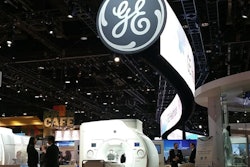
The lines between clinical and executive work seem to continuously blur in today's healthcare landscape. I regularly experience this in my field, juggling my personal priority to provide excellent patient care as a radiologist with the ever-present need to meet facility requirements as an employee of my healthcare system.
As the industry continues to shift in this direction, collaboration between administrators and clinicians should become an integral part of the executive decision-making processes for facilities, especially when it comes to capital decision-making. The perspectives of both professions, while likely very different, are both valid, and by marrying the two, executives can make more informed and confident purchases. After all, radiologists are on the frontlines of care using the purchased equipment, which makes their viewpoint considerably relevant and invaluable.
 Dr. Stamatia Destounis from Elizabeth Wende Breast Care.
Dr. Stamatia Destounis from Elizabeth Wende Breast Care.Consider the various promises brands make about their products. Claims burst with all of the key jargon any prospective customer would naturally want from a manufacturer, from meeting the bottom line to increasing productivity and beyond. These words are certainly enticing, but rather than placing so much emphasis on a robust list of desirable attributes, radiologists are more impressed with tangible, irrefutable clinical evidence to prove the claims are true.
If a brand claims its screening technology increases workflow efficiency, for example, then it should have the data to quantifiably prove it. This concept really isn't a novel demand, but rather a warranted and fundamental expectation across any practice of medicine. Medical professionals thrive on clinical proof to be able to care for, and advise, their patients in the best way. Executives, likewise, want radiologists to be as poised as possible with patients who may serve as referrals to others in need of radiological expertise in the future.
Aside from having actual proof of a screening product's proclaimed benefits, it's equally important to note if a brand is prioritizing the right attributes. All too often, brands are pushing products that, despite focusing on the enhancement of important aspects in radiology, overlook the most crucial factors.
For example, patient satisfaction and comfort are growing points of focus. While these are undoubtedly valid, there are other product attributes that should never be compromised in favor of these features, primarily accuracy.
A radiologist's purpose is to find the smallest of abnormalities when imaging patients in an effort to detect cancer and get patients treated as early as possible. That swift discovery cannot be made without the accuracy of a high-quality image, which is why radiological products should always put precision first.
Accuracy also ultimately affects the patient experience and satisfaction. Patients are likely to have a more positive association with a radiologist who, due to accurate imaging equipment in the facility, has the ability to detect cancer early on, allowing the patient to receive prompt treatment.
Brands that emphasize the most fundamental product attributes, such as accuracy, show they have a deep understanding of the radiology and medical imaging space. Based on my experience, they often have this ability as a result of a long tenure with, and core brand focus on, the industry.
Once again, like any medical professional, radiologists require technology that instills confidence when they are screening and diagnosing their patients. It only makes sense that this type of innovation would come from leaders -- pioneers who have paved the way and been at the forefront of the subject matter. Looking beyond a new product with a household name, there should be strong support in the radiology field for the manufacturer itself.
It's crucial that radiologists assert the importance of clinical evidence, accuracy, and industry experience when evaluating brand promises and use their firsthand experiences to help inform executives. When it comes down to a purchasing decision for a facility, in reality, executives and radiologists have the same underlying goal: They want facilities to succeed from a business perspective, and they also want to help patients. However, their differing approaches to these goals, based on their professional experiences, are why the best purchasing decisions will be made for facilities that foster collaboration between executives and clinicians. It's time to peer through each other's lenses so all can feel assured with their facility's medical equipment.
Dr. Stamatia Destounis is a radiologist at Elizabeth Wende Breast Care in Rochester, NY.
The comments and observations expressed herein are those of the author and do not necessarily reflect the opinions of AuntMinnie.com.



















